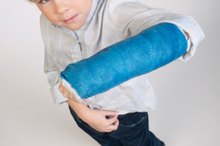5 Types of Wounds
As any adult knows all too well, wounds occur in countless ways and vary broadly in severity. A wound generically refers to a tissue injury caused by physical means. In everyday parlance, wounds typically refer to skin injuries. Medical professionals classify skin wounds in several ways, such as whether they are short- or long-term, and whether they are contaminated with bacteria. These distinctions reflect differences in the nature, cause and likely course of wound, as well as treatment decisions 3. Short-term, open wounds are often described in 5 categories, based on the mechanism and appearance of a skin injury.
If you are experiencing serious medical symptoms, seek emergency treatment immediately.
Incision
An incision wound refers to a clean cut in the skin caused by a sharp object. Accidentally cutting yourself with a kitchen knife, scissors or a piece of broken glass are everyday examples of incision wounds. A surgical incision is another common example. Incision wounds typically heal more quickly than other types of wounds because of the smooth skin edges. Scarring is also typically less extensive with deep incision wounds, compared to other types of deep skin wounds.
- An incision wound refers to a clean cut in the skin caused by a sharp object.
- Incision wounds typically heal more quickly than other types of wounds because of the smooth skin edges.
Laceration
4 Types of Open Wounds
Learn More
A laceration refers to an injury caused by tissue tearing. Your skin is both tough and flexible, so it takes a lot of force to cause a laceration. Because of the high force involved, other deeper tissues -- such as:
- bones
- muscles
- tendons
- ligaments
- blood vessels
- nerves
- even internal organs -- are frequently also damaged
Skin lacerations most frequently occur over bony prominences, like the elbows, knees and hips. Blunt trauma, such as occurs in a car accident or being hit with a hard object, is the most common mechanism of laceration injuries. Because the skin edges are jagged and torn, a laceration injury heals more slowly and with more scarring than an incision wound.
- A laceration refers to an injury caused by tissue tearing.
- Because the skin edges are jagged and torn, a laceration injury heals more slowly and with more scarring than an incision wound.
Abrasion
Abrasions occur when the skin is scraped off due to rubbing against a rough surface. A skinned knee or elbow is a common example of a minor, superficial abrasion wound. However, these skin wounds can be serious if the abrasions are deep or widespread, such as occurs after a fall from a motorcycle or a bicycle travelling at a relatively high speed. Commonly known as road rash or road burn, these injuries are often quite painful and sometimes require skin grafts to replace the lost skin. Scarring typically doesn’t occur with superficial abrasions, but can be extensive with deep abrasions.
- Abrasions occur when the skin is scraped off due to rubbing against a rough surface.
- However, these skin wounds can be serious if the abrasions are deep or widespread, such as occurs after a fall from a motorcycle or a bicycle travelling at a relatively high speed.
Avulsion
Antibiotics for a Puncture Wound
Learn More
Skin avulsion, also known as degloving, is a serious injury in which the skin is torn from the tissues beneath it. The mechanism of skin avulsion typically involves the skin catching on an object while the involved body part is in motion. Ring avulsion, such as occurred to comedian Jimmy Fallon, is an example. Depending on the circumstances of injury, avulsed skin can sometimes be surgically reattached. If reattachment is not possible, skin grafts are typically used to replace the lost tissue.
- Skin avulsion, also known as degloving, is a serious injury in which the skin is torn from the tissues beneath it.
Puncture
A puncture wound is created when a sharp, slender object penetrates the skin and possibly the underlying tissues, depending on the length of the object. In contrast to an incision, a puncture wound is deeper than it is wide. Thus, the entrance site of a puncture wound is generally small and often doesn’t cause much superficial bleeding. The surface wound tends to close quickly, but this can cause problems as it may lead to an enclosed pocket of infection. Tetanus is a particular concern with puncture injuries. Common mechanisms of puncture wounds include stepping on a nail, being bitten by an animal or sustaining a stab wound.
- A puncture wound is created when a sharp, slender object penetrates the skin and possibly the underlying tissues, depending on the length of the object.
Other Types of Wounds
There are certainly other types of wounds not included in the 5 categories discussed. Some examples of other types of wounds include: -- contusion, commonly known as a bruise -- thermal, chemical or electrical burn -- penetrating wound, which extends into an internal organ or body cavity -- skin ulcers, a type of chronic cavitary skin sore
Warnings and Precautions
Most superficial skin wounds heal within a week or two with simple cleaning and first aid measures. Some wounds, however, require professional medical evaluation and treatment. Seek medical attention if you sustain a deep puncture wound or bite. Medical attention is also recommended for a cut that is large, deep or gaping, or contains debris you cannot rinse away with water. Continued bleeding after 5 to 10 minutes of firm pressure is another indication for professional medical care. Skin wounds due to substantial trauma or that are accompanied by loss of feeling or function in the involved area also require medical care. Drainage of pus, expanding redness around a wound or a fever could indicate a serious skin infection, which requires immediate medical attention.
Reviewed and revised by: Tina M. St. John, M.D.
- Most superficial skin wounds heal within a week or two with simple cleaning and first aid measures.
- Medical attention is also recommended for a cut that is large, deep or gaping, or contains debris you cannot rinse away with water.
Related Articles
References
- Compact Clinical Guide to Critical Care, Trauma, and Emergency Pain Management; Liza Marmo and Yvonne M D'Arcy
- Wound Management; Carol Dealey and Janice Cameron
- International Journal of Emergency Medicine: Acute Wound Management: Revisiting the Approach to Assessment, Irrigation, and Closure Considerations
- U.S. National Library of Medicine. MedlinePlus. Cuts and Puncture Wounds. Updated 01/12/15. https://medlineplus.gov/ency/article/000043.htm
- Kasper, Dennis L.., Anthony S. Fauci, and Stephen L.. Hauser. Harrison's Principles of Internal Medicine. New York: Mc Graw Hill education, 2015. Print.
- U.S. National Library of Medicine. MedlinePlus. Cuts and Puncture Wounds. Updated 01/12/15.
Writer Bio
Stephanie Chandler is a freelance writer whose master's degree in biomedical science and over 15 years experience in the scientific and pharmaceutical professions provide her with the knowledge to contribute to health topics. Chandler has been writing for corporations and small businesses since 1991. In addition to writing scientific papers and procedures, her articles are published on Overstock.com and other websites.









